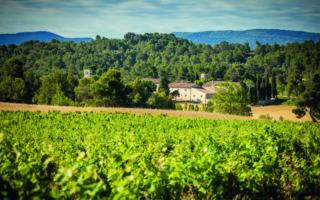The Wines of the Côtes du Rhône

A brief history
The Rhone Valley, by its very nature, has always been the ideal route between the Mediterranean and northern Europe and the Atlantic. The Ancient Greeks used the Rhone to travel into the heart of Gaul to carry out trade. Wine production continued apace with the arrival of the Romans in 125 BC.
During the first century AD, the competition between Italy and the Rhone area of Gaul became fierce. It is around this time that the Gallo-Roman villa of Molard, at Donzère, was built, along with many of the region’s amphora workshops. These amphorae were used to transport wines and fish sauces. A number of archaeological discoveries, together with a long-standing tradition of historical research, enable us to say with some confidence that the Côtes du Rhône wines have a longer history than many other French wine-growing areas.
The Romans built the city of Vienne and then planted the Vienne vineyards, which soon developed a considerable renown. The Romans had to undertake huge double-digging projects to plant the vines before building the walls to protect the terraces. The very rugged slopes of the right bank appealed to the Romans – Côte Rôtie in Saint Joseph – who then went on to annex the left bank – Hermitage. They transformed the region into one of the most beautiful in Narbonnese Gaul. From the first century onwards, the area was at the forefront of commercial wine production, thanks to the Romans.
In the 14th century, the Avignon Popes were supplied their wine by the local wine producers. John XXII, the second of the seven Popes to be based in Avignon, had a castle built at Châteauneuf du Pape. His successor, Benedict XII, began the construction of the Papal Palace in Avignon.
The 17th and 18th centuries saw rapid progress in Rhone Valley wine production.
In the 17th century, “Côte du Rhône” was the name of an administrative district in the Vicariate of Uzès (Gard), where the wines were particularly renowned. Regulations were introduced in 1650 to guarantee their origin and their quality.
By an Edict of the King in 1737, all the casks that were to be used for carriage and sale had to be branded with the letters “C.D.R.”. _It was only in the middle of the 19th century that Côte du Rhône became Côtes du Rhône, by including the vineyards on the left bank of the Rhone. This notability, which had been steadily accrued over the centuries, was given official recognition by the High Courts of Tournon and Uzès in 1936.
Then came the ultimate recognition, thanks to the endeavors of Baron Le Roy – a man with courage and vision – with the creation in 1937 of an AOC – Appellation d’Origine Controlée – Côtes du Rhône.
An A.O.C. classification is the acknowledgement both of a contemporary reality and a tradition that is comprised of a number of key elements: one or more varieties of vine, a clearly defined territory and superb expertise in wine production.
The rules that guarantee the quality of AOC products are laid down by a national body, the I.N.A.O., which also regularly verifies that these products meet criteria based on: yields, territorial extension, grape varieties, cultivation methods and harvesting techniques.
To be granted an AOC, a wine must also undergo analyses and, of course, tasting, to ensure its quality and that it maintains local characteristics.
Share to: Facebook Twitter LinkedIn Email
More in banking, courses, history, renovation, travel, vineyards, wine
By FrenchEntrée
Leave a reply
Your email address will not be published. Required fields are marked *



